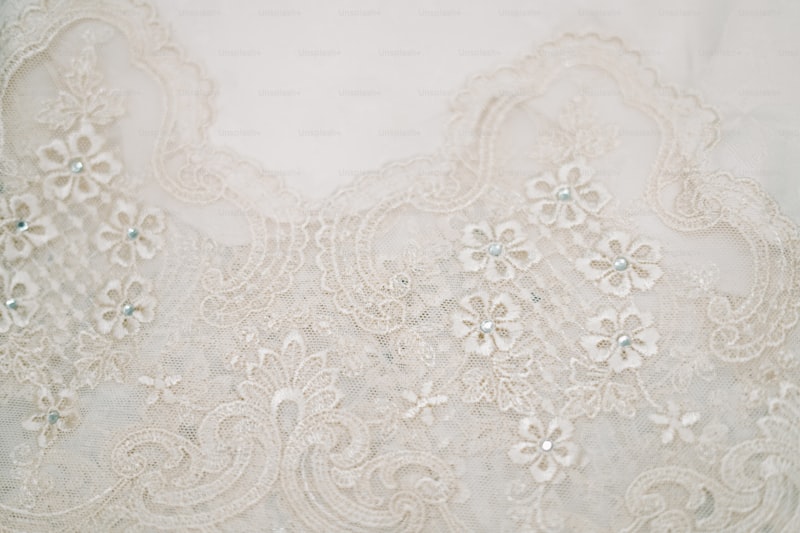Exploring the Beauty of Exquisite Lace Details: A Comprehensive Guide
Understanding Exquisite Lace Details
Lace has been an integral part of fashion and design for centuries, adding a touch of delicacy and elegance to various garments and decor. The phrase 'Exquisite Lace Details' is often used to describe intricate lace designs that elevate the aesthetic of an item, whether it be clothing, table settings, or wedding decor. This article will take you on a journey through the captivating world of exquisite lace details, exploring its history, styles, applications, and how to care for lace items.
The Historical Significance of Lace
The origins of lace date back to the late 15th century in Europe, with the art form evolving over the years. Initially created by hand using threads of linen, silk, and gold, lace became a symbol of luxury and refinement. It was especially popular during the Renaissance and Baroque periods, often seen adorning the garments of the upper class.
With the Industrial Revolution, lace production transitioned to machines, making lace more accessible to the general public. However, the charm of handmade lace remains unparalleled, allowing artisans to create exquisite lace details that showcase their unique craftsmanship. Today, lace is celebrated not only in fashion but also in home decor, accessories, and art.
Types of Lace
| Type of Lace | Description |
| Chantilly Lace | Known for its fine, detailed patterns and soft texture, ideal for elegant garments. |
| Venise Lace | Characterized by its heavy embroidery and intricate designs, perfect for bridal wear. |
| Guipure Lace | Made without a background, offering a bold and modern look used in various clothing items. |
| Brussels Lace | A hand-made lace known for its elaborate floral designs, often used for high-end fashion. |
| Corded Lace | Featuring raised patterns, providing depth and texture, suitable for specialized garments. |
The Influence of Exquisite Lace Details in Fashion
In modern fashion, exquisite lace details can be found in various collections, particularly in bridal wear, evening gowns, and casual attire. Designers often use lace to create backdrops, sleeves, and embellishments that make a fashion statement. For example, a wedding dress adorned with Chantilly lace can add a romantic feel, while a Guipure lace top may reflect contemporary chic. Many fashion houses, such as Valentino and Dior, have showcased lace in their latest collections, reaffirming its timeless appeal.
Incorporating Lace Details into Home Decor
Lace is not limited to the runway; it has found its way into home decor as well. Exquisite lace details can enhance the elegance of any room. Common uses include:
- Lace Tablecloths: Perfect for dinner parties or special occasions, adding sophistication to the table setting.
- Curtains: Lace curtains can create a soft, diffused light in living spaces while maintaining privacy.
- Pillows and Cushions: Incorporating lace into textile designs can elevate the overall decor of a room.
These details make a significant impact on the ambiance of your home, creating an inviting and luxurious atmosphere.
How to Care for Lace Items
Caring for lace is essential to maintain its delicate appearance and durability. Here are some tips to keep in mind:
- Washing: Hand wash lace items in cold water with a gentle detergent to prevent damage. Avoid bleach, as it can discolor the fabric.
- Drying: Lay lace flat on a clean towel to dry. Avoid wringing out excess water, as this can distort the shape.
- Storing: Store lace items in a cool, dry place, preferably wrapped in tissue paper to prevent creasing or snagging.
Fashion Forward: Trends Featuring Exquisite Lace Details
As the fashion industry evolves, lace continues to adapt and reinvents itself. Newly emerging trends include:
- Mixing Textures: Designers are combining lace with other materials such as leather or denim for a modern twist.
- Layering: Wearing lace under sheer fabrics or over solid colors creates an intriguing visual contrast.
- Statement Accessories: Lace-infused accessories like bags and shoes are becoming popular, allowing people to incorporate lace into their everyday styles.
Conclusion: The Timeless Allure of Exquisite Lace Details
In conclusion, exquisite lace details have stood the test of time, captivating generations and becoming an enduring symbol of elegance and sophistication. Whether found in fashion or home decor, lace adds a level of charm that few other materials can achieve. When incorporating lace into your wardrobe or living space, consider the types of lace that best suit your style, and remember to care for your lace items properly to keep them looking their best.
As you explore the world of lace, consider its various forms and how it can enhance your personal aesthetic. With its rich history, versatility, and timeless appeal, exquisite lace details will continue to inspire and delight.
